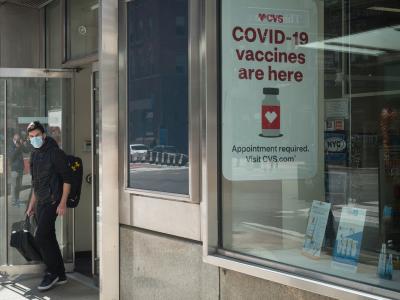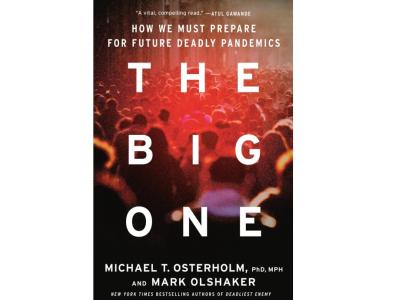Vaccination after COVID-19 hospital stay may protect against long COVID
A study yesterday in Clinical Microbiology and Infection suggests that natural infection, but not immunity acquired from COVID-19 vaccinations, is linked to the development of long COVID-19, or symptoms that persist up to a year after acute infection.
The prospective study was based on 479 COVID-19 patients originally seen at the Udine Hospital in Italy from March to May 2020. Researchers conducted interviews 6 and 12 months after acute infection, and vaccination status was obtained, as vaccines had become available in the interim. The investigators also obtained two different serologic assays to distinguish between response to vaccination (receptor-binding domain [RBD] SARS-CoV-2 immunoglobulin G [IgG]) and to natural infection (non-RBD- SARS-CoV-2 IgG).
Of the participants, 47.2% experienced COVID-19 symptoms 1 year after infection, including 85 (30.6%) who reported the onset of new post-COVID-19 symptoms at 12 months. There were no significant differences in the worsening of post-COVID 19 symptoms (22.7% vs 15.8%, P = 0.209) among vaccinated (132) and unvaccinated (347) patients.
The authors said the presence of non-RBD SARS-CoV-2 IgG induced by natural infection showed a significant association with post-COVID-19 syndrome (odds ratio [OR]; 1.35, 95% confidence interval [CI], 1.11 to 1.64; P = 0.003), while the presence of RBD SARS-CoV-2 IgG was not associated with the occurrence of post-COVID-19 syndrome (>2,500 units per milliliter [U/mL] vs 0.9–2,500 U/mL, OR 1.36; 95% CI 0.62 to 3.00; P = 0.441).
"The persistence of a high titre serological response induced by natural infection but not by vaccination may play a role in long COVID-19," the authors concluded. "Our findings support the practice of offering SARS-CoV-2 vaccination regardless of infection history and identifies a novel aspect of humoral response in patients with post-COVID-19 syndrome."
Mar 22 Clin Microbiol Infect study
Study: Kids' antibody responses after COVID-19 greater than adults'
US infants and toddlers previously infected with SARS-CoV-2 had significantly higher levels of antibodies against the virus than did adults, finds a prospective study yesterday in JCI Insight.
Researchers with Johns Hopkins University and the Centers for Disease Control and Prevention compared concentrations of receptor binding domain (RBD) antibodies against the SARS-CoV-2 spike protein and neutralizing antibodies in serum samples from children 0 to 17 years old with those from adults aged 18 to 62.
The analysis used sample from 682 unvaccinated children and adults in 175 Maryland households with at least one child 0 to 4 years old participating in a COVID-19 surveillance study. Samples were collected from November 2020 through March 2021. Household members were followed up for roughly 8 months.
Among 56 participants with antibodies indicating previous COVID-19 infection, 15 were aged 0 to 4 years (youngest, 3 months), 13 were aged 5 to 17 years, and 28 were 18 and older.
Relative to adults, RBD antibody levels in children 0 to 4 years old were 13 times higher and nearly 9 times higher in those aged 5 to 17. Children 0 to 4 years old had neutralizing antibody levels twice as high as adults. The study authors said that higher neutralizing antibody levels may indicate greater protection against severe COVID-19.
In 11 of 12 households in which both children and adults had SARS-CoV-2 antibodies, those aged 0 to 4 years had the highest levels of both types of antibodies studied.
Only about half of participants with RBD antibodies had been informed by a healthcare provider that they may have COVID-19, which the researchers said could indicate that many asymptomatic or milder infections go unrecognized. No participants were hospitalized for their infections.
"Very young children in our study developed high titers of antibody to the SARS-CoV-2 spike protein, which is the target antigen for COVID vaccines," lead author Ruth Karron, MD, said in a Johns Hopkins press release. "These findings should provide some reassurance that with the appropriate vaccine doses we can effectively immunize very young children against SARS-CoV-2."
Mar 22 JCI Insight study
Mar 22 Johns Hopkins press release











